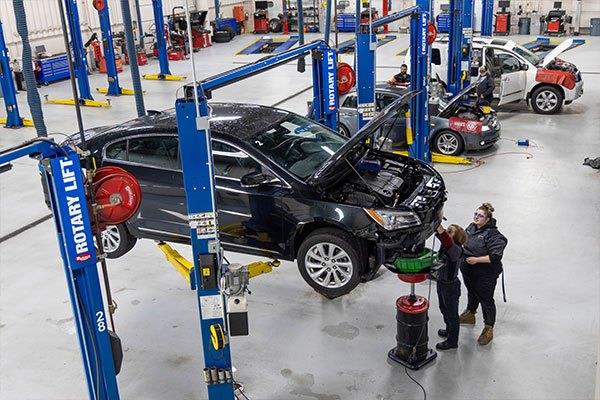
Popular Mechanics Auto Smartphone Smartphone Displays are a great way to keep you eyes on the road, and prevent distractions from your phone. The HUD app connects to the device to display information from your smartphone directly on your dashboard. The dashboard is fitted with a nonslip mat that prevents accidental movement. Additional to the device, the package contains a reflective screen protector along with a guide.
Smartphone heads-up display
Follow the Popular Mechanics Smartphone Display Installation instructions if you want to quickly review how to install a HUD into your vehicle. The kit comes with a non-slip mat and a head-up display to protect your smartphone's touchscreen. The unit measures 3x6 inches and is packaged in a hangable case. Follow these instructions to install your HUD.
HUD apps are compatible with almost all smartphones. A HUD will add several hundred dollars to the price of a vehicle. A HUD is a valuable safety feature, but it can be expensive. Therefore, if you want a HUD in your vehicle, you may want to opt for a third-party device. These devices are not as reliable as the HUD systems in vehicles.
Requirements
The HUD plays a crucial role in the cockpit, especially when safety and time-critical maneuvers are required. Pilots would need to adjust their focus to see clearly, so they could not use the HUD to view the exterior and interior of the cockpit. HUDs of high quality are made to work with avionics like radars and cameras so the pilot can clearly see what he is seeing without having to refocus his eyes.

FAQ
What length is an automotive mechanic apprenticeship?
An automotive mechanic apprenticeship takes around three years to complete. This includes two years at school and two years working as an apprentice. The first year is used to learn all aspects of the trade including safety procedures and theory. You will also learn to use tools efficiently and safely during this period. After you have completed the first year of training, you will be able to spend an additional year on-the job learning different trades. These periods will also give you the chance to take formal courses.
The final year of the program is spent gaining qualifications and becoming certified in the field. These include NVQs, which are obtained after passing industry-specific exams. The HNCs (Higher National Certificates), on the other hand, cover general subjects like customer service and management. City & Guilds certificates can be obtained for individuals who want to learn certain trades.
How do I prepare for a mechanic apprenticeship?
Understanding what you're getting into is crucial. You need to understand the mechanics of cars and how they work. This will make it easy to find the right place to start your first day in the garage.
It is also important to be able to fix small problems like broken lights or tires.
This will teach you how to diagnose problems and fix them yourself.
To put the pieces back together, you will also need to understand how they fit together.
Finally, it is important to know how tools can be used safely and efficiently.
All of these factors will allow you to become a skilled mechanic.
What is the average time it takes to become a mechanic?
To become a skilled mechanic, you need years of experience and practice. You can learn the most effective way to fix cars by learning from a professional mechanic.
You will need to spend some time in a garage to learn as much about cars and mechanics as possible. You will need to read books on mechanical engineering and car design.
Furthermore, you'll need to enroll in auto school.
The most important thing to do is start early. It doesn't matter if you're old or not to study automotive technology. Start studying automotive technology now to become a mechanic.
How long does an automotive course take?
An automotive course is three years long.
The first year focuses on theory and learning about cars. The second year will be spent in practical training. Here you will learn how fix engines, drive and other mechanic jobs. You will spend the final year working in a local garage to gain real-world experience.
What qualifications do you need to be a truck-mechanic?
Although you don't need to have any formal qualifications, your experience working with trucks and engines is invaluable. Your knowledge is valuable as you are able to quickly diagnose problems and work efficiently.
A solid understanding of diesel technology is also a plus. This will help you understand the components that are needed to fix our vehicles.
Statistics
- The U.S. Bureau of Labor Statistics (BLS) reports that the job outlook for automotive service technicians and mechanics is expected to decline by 4% from 2019 to 2029. (indeed.com)
- According to the BLS, the median annual salary for automotive service technicians and mechanics in the United States was $44,050 in May 2020. (uti.edu)
- Apprentice mechanics earn significantly less hourly than mechanics who have completed training, with a median wage of approximately $14.50 an hour, according to PayScale. (jobhero.com)
External Links
How To
How to properly diagnose and repair your vehicle
Before you can determine if your car requires repairs, it's important to first analyze the symptoms. You can then follow these steps for a proper diagnosis of your vehicle.
-
Check engine lights. You should inspect the dashboard lights, such as the engine light indicator and the oil pressure gauge. Also, check the battery light indicator. If they have been flashing for more days than usual, it could be a sign that something is wrong with the vehicle.
-
Inspect the tire treads. If the tires are worn out, they could cause problems with handling and braking. Also, inspect the treads of your wheels. They should be clean, and they should be smooth. To do this, remove the wheels and take them out. A flashlight can be used to check how worn the treads are.
-
You should always monitor the level brake fluid. You must always monitor the level of your brake fluid. This helps ensure that your brakes operate properly. Low brake fluid levels can cause brake failure when you apply pressure.
-
The suspension system should be tested. A suspension system is designed to absorb vibrations and shocks. It provides better control and allows smoother acceleration and deceleration. Your vehicle might feel wobbly, or shake uncontrollably if it has a bad suspension. To test whether your vehicle has a suspension issue, try putting weight on the front or rear axle and observe the movement.
-
Examine your steering column. The steering column is used to link the steering wheel with the rest of vehicle's components. The steering column can often be damaged by an accident. You should replace your steering column if it feels loose or unstable.
-
Observe the exhaust pipes. Exhaust pipes move gases from combustion chamber to atmosphere. Your cabin will be effected if your exhaust pipe cracks or leaks. If your tailpipe bends, it is important to fix it immediately.
-
Check under the hood. If you see anything unusual, take a look under the hood. Your engine could be leaking fluids. A professional technician should be contacted if your engine compartment emits an unusual smell.
-
Check the air filter. The outside environment can collect dust and other debris in your vehicle's air filters. Dirty air filters can cause your vehicle to run poorly. Replace your air filter regularly.
-
The fan belt should be checked. Your vehicle's fanbel is what connects the engine and the transmission. If it breaks, the engine won't turn over. It's easy to replace the belt. You only need a screwdriver or pliers to replace your belt.
-
Make sure you inspect the radiator hoses and hoses. The radiator hose is used to carry water from the radiator to your engine. It can crack or become damaged and leak hot liquid onto an engine. To repair the leaky hose, all you need is a pair if needle-nosepliers.
-
The windshield wipers should be checked. Windshield wipers use electricity to wipe away rain and snow. If they stop working they could leave streaks behind on your window glass. You can fix the problem by changing the washer fluid.
-
Check the battery cables. The batteries provide power to the electrical systems within your car. If you are replacing batteries, disconnect the negative cord first. Failure to do so can damage your alternator.
-
Pay attention to your headlights. Headlights help you see the road ahead. It can lead to poor visibility if they aren't working properly. Inspect the bulbs for signs of burnt out.
-
Check the lights. Lights warn other drivers when you approach them at night. It could cause distraction and even lead to an accident if it doesn't work.
-
Inspect your brakes. Before you collide with another vehicle, brakes will slow down the car. If the brakes fail to work correctly, your car could lose control and collide with another vehicle.
-
Change your oil. Oil keeps your engine lubricated. This oil helps to prevent metal parts becoming too worn out. It is recommended that you change your oil at least once per month.